Methods to Reduce Adhesions and Tightness
Rapid Mobility & Neurological Warm Up
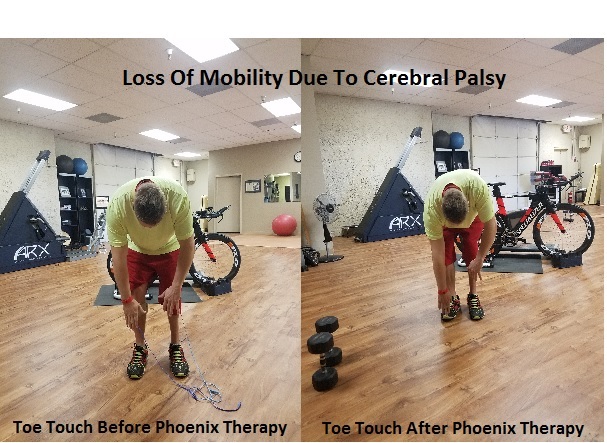
Muscles do not stretch the way almost everyone thinks they do. You must continuously contract the muscles while lengthening them, from a position where those muscles are as short as possible and into a length where they are as long as possible. You can only lengthen to a range where the muscles being stretched can still resist. The resistance used to stretch a muscle must approach 2X’s the maximum resistance that the person can overcome in Resistance Strength Training. Contracting the muscle with the Phoenix Waveform during stretching takes the pain out of stretching and prevents over-stretching (over-stretching creates dangerous potential weaknesses in and around joint structures).
When you use the Phoenix Waveform to contract the muscles and then you lengthen your muscles the result is an immediate, cumulative, and permanent change in resistance flexibility (note: range of motion is not the true flexibility range of the muscle) with a simultaneous increase in the ability of those muscles to shorten more optimally (the contraction stretch length is inversely proportional to the shortening length). Stretching without contracting a muscle produces a false range of motion known as substitution, and ultimately results in over-stretching and injury
The resulting improvements in muscle contraction while lengthening the muscles results in dramatic bio-mechanical realignment of the skeletal system – improved bone rotational relationships (BRI) occur. This translates into increases in speed, acceleration, and accuracy in skill level.
Indications for use: Lack of mobility, reduced range of motion, stiffness or tightness, pain relief, as a warm up or movement prep before exercise or training session, before an event or race, to increase mobility around an injured body part, any time increased mobility is desired.
Program: Phoenix Hunt or 300
Basic breathing exercises to hyper-oxygenate the blood
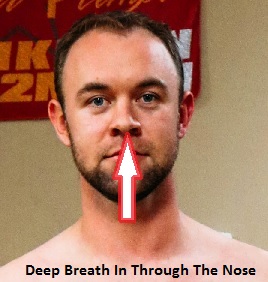
Movement: Breath in deep through the nose, then blow all the air out of your lungs through your mouth. (You may feel a little lighted-headed the first few times you do this.)
Repetitions: 30
Standing Toe Touch
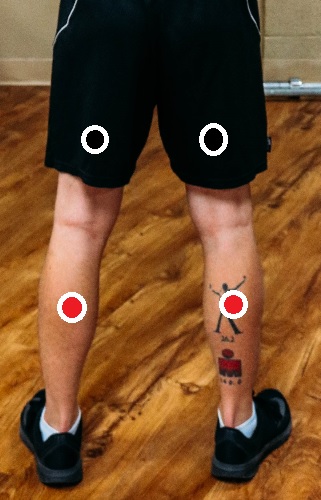
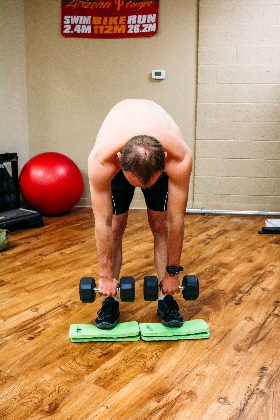
Pad placement: Black pad on the belly of the hamstring, red pad on the belly of the gastrocnemius. Repeat the same pad placement on the opposite side of the body.
Intensity: Slight to moderate muscle contraction or a discomfort level of 4-5 on a scale of 10.
Movement: Stand tall with your toes slightly elevated, while holding 10-25 pounds, slowly bend forward and try to touch your toes, hold for 3 seconds then return to the upright position.
Hyperoxygenation Breathing: To hyper-oxygenate, the blood Inhale deeply through your nose, then as you are moving though the movement blow all the air out of your lungs, then inhale deeply again through your nose, blow all the air out of your lungs as you move back to the starting position. Repeat this throughout the movement session.
Repetitions: 5-10
Squat
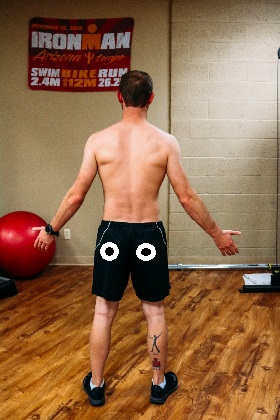
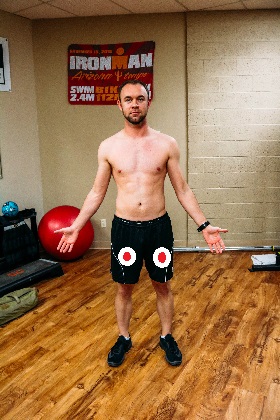
Pad placement: Back pad on the belly of the gluteus maximus, red pad on the belly of the quadriceps. Repeat the same pad placement on the opposite side of the body.
Intensity: Slight to moderate muscle contraction or a discomfort level of 4-5 on a scale of 10.
Movement: Stand tall and hold onto a TRX, rope, or door jam. Drop down into the squat position making sure to keep your knees over your ankles. Try not to let your knees go too far in front of your knees. You can do this without holding support, however, try to make sure to not allow your knees to go in front of your knees.
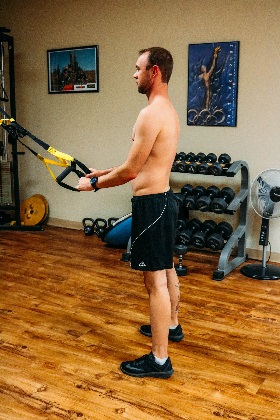
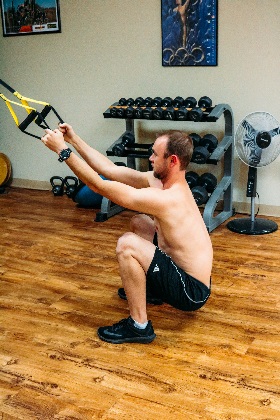
Hyperoxygenation Breathing: To hyper-oxygenate, the blood Inhale deeply through your nose, then as you are moving through the movement blow all the air out of your lungs, then inhale deeply again through your nose, blow all the air out of your lungs as you move back to the starting position. Repeat this throughout the movement session.
Repetitions: 5-10. Each time try going deeper into the squat. (Get your butt closer to the ground while keeping your knees over or in line with your ankles.
Lunge


Pad placement: Back pad on the belly of the gluteus maximus, red pad on the belly of the quadriceps.
Intensity: Slight to moderate muscle contraction or a discomfort level of 4-5 on a scale of 10.
Movement: Stand tall with the support of a TRX or rope, and perform a rear lunge. Step back with one leg while bending the supporting leg. Plant forefoot far back on the floor. Lower body by flexing knee and hip of supporting leg until knee of rear leg is almost in contact with the floor. Return to an original standing position by extending the hip and knee of the forwarding supporting leg and return the rear leg next to the supporting leg. Repeat the movement with opposite legs alternating between sides.
Hyperoxygenation Breathing: To hyper-oxygenate, the blood Inhale deeply through your nose, then as you are moving though the movement blow all the air out of your lungs, then inhale deeply again through your nose, blow all the air out of your lungs as you move back to the starting position. Repeat this throughout the movement session.
Repetitions: 5-10
Lunge With Lateral Bend
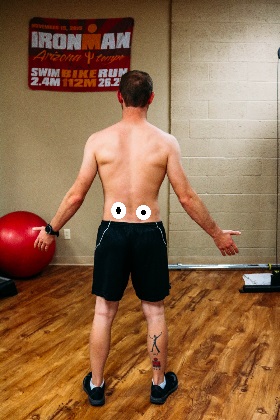
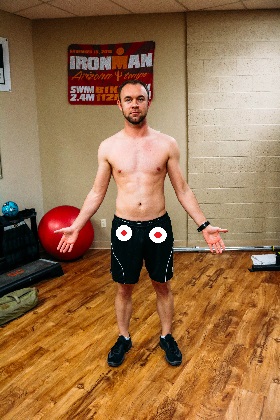
Pad placement: Black pad on the lower back, red pad over the psoas muscle on the same side. Repeat the same pad placement on the opposite side of the body.
Intensity: Slight to moderate muscle contraction or a discomfort level of 4-5 on a scale of 10.
Movement: Perform a rear lunge. Step back with one leg while bending the supporting leg. Plant forefoot far back on the floor. Lower body by flexing knee and hip of supporting leg until knee of rear leg is almost in contact with the floor. Put your hands over your head and bent away from the knee that is close to the ground.
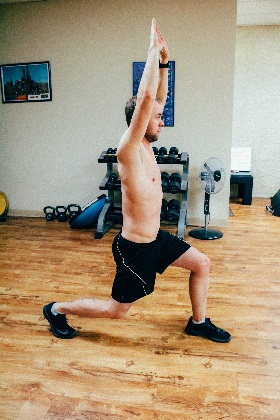
Hyperoxygenation Breathing: To hyper-oxygenate, the blood Inhale deeply through your nose, then as you are moving through the movement blow all the air out of your lungs, then inhale deeply again through your nose, blow all the air out of your lungs as you move back to the starting position. Repeat this throughout the movement session.
Repetitions: 5-10 each side
Lumbar Circles


Pad placement: Black pad on the lower back, red pad over the psoas muscle on the same side. Repeat the same pad placement on the opposite side of the body.
Intensity: Slight to moderate muscle contraction or a discomfort level of 4-5 on a scale of 10.
Movement: Stand tall, then begin by tilting the lumbar spine laterally (run your hand down the side of the seam of your pants). Totally relax the neck (no neck tension at all). Allow the head to hang freely. Keep the lumbar spine relaxed and long. Rotate to the other side. Return to the upright position by drawing your hand up the pant seam.
Hyperoxygenation Breathing: To hyper-oxygenate, the blood Inhale deeply through your nose, then as you are moving through the movement blow all the air out of your lungs, then inhale deeply again through your nose, blow all the air out of your lungs as you move back to the starting position. Repeat this throughout the movement session.
Repetitions: 5-10
Shoulder and Lat Hangs
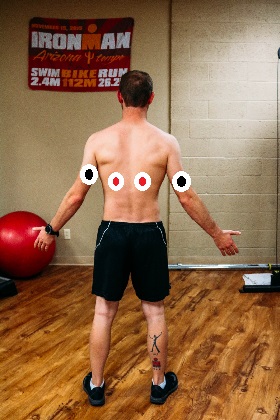
Pad placement: Black pad on the belly of the triceps, red pad on the lower latissimus dorsi. Repeat the same pad placement on the opposite side of the body.
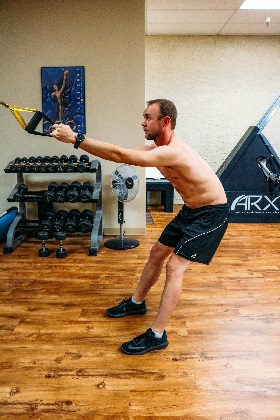
Movement: Hold onto a door jam, TRX, or rope. Lean back and fully extend your arm. Relax the shoulder and back. Then return to the starting position like you are doing a row.
Hyperoxygenation Breathing: To hyper-oxygenate, the blood Inhale deeply through your nose, then as you are moving through the movement blow all the air out of your lungs, then inhale deeply again through your nose, blow all the air out of your lungs as you move back to the starting position. Repeat this throughout the movement session.
Repetitions: 5-10
Intellectual Property Of Dr. Jeff Banas. Copyright 2022
Individual results may vary.
Consult your physician or health care provider and follow all safety instructions before beginning any new exercise program, especially if you are pregnant, or have any medical condition. The contents on our website are for informational purposes only and do not constitute medical, legal, or any other type of professional advice. Read the Globus and Phoenix Training Manual Fully before using the EMS unit. Results will vary depending on the individual, personal health status, performance goals, and proper use of the device. Terms of Service, Disclaimer, & Privacy Policy
Consult your physician or health care provider and follow all safety instructions before beginning any new exercise program, especially if you are pregnant, or have any medical condition. The contents on our website are for informational purposes only and do not constitute medical, legal, or any other type of professional advice. Read the Globus and Phoenix Training Manual Fully before using the EMS unit. Results will vary depending on the individual, personal health status, performance goals, and proper use of the device. Terms of Service, Disclaimer, & Privacy Policy
Copyright 2022 Dr. Jeff Banas